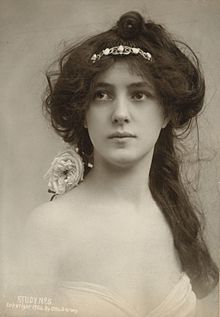
Figure 1 – Photograph of Evelyn Nesbit by Sarony 1902. From the Wikipedia and in the public domain in the United States because of its age.
Continuing on the theme of sexism and imagery, I was reading the other day an article in BBC Culture by Lindsay Baker about “Evelyn Nesbitt – the World’s First Supermodel.” We have discussed the fashion industry in this blog several times. But the fact remains that there is, indeed must be, a symbiotic relationship between an exploitative industry and the models themselves. The problem is that for a young neophyte in the game the money and the power are all on one side of the relationship. Of course, there needed to be a first and it is not surprising that the first occurred as soon as photography became a potent force in advertising.
Florenced Evelyn Nesbit (1884 – 1967), was known professionally as Evelyn Nesbit, was a popular American chorus girl and artists’ mode. At the turn of the 20th century the figure and face of Evelyn Nesbit was everywhere. Beyond mass circulation newspaper and magazine advertisements, she was to be found on souvenir items and calendars. She was indeed the world’s first supermodel, defining the meaning of the term and profession. She was a cultural celebrity and she posed for a several of the leading, and mainstream, artists of the day including: James Carroll Beckwith, Frederick S. Church, and notably Charles Dana Gibson, who made her the quintessential “Gibson Girl“.
It is odd to me that I have read the story of Nesbitt so many times in different contexts. She caught the eye of architect – socialite Stanford White, who first gained the family’s trust then sexually assaulted Evelyn while she was unconscious. In one of the sensational trials (Papers of the day called it “The Trial of the Century”) of the era Nesbit’s jealous husband, multi-millionaire Harry Kendall Thaw, shot and murdered Stanford White on the rooftop theatre of Madison Square Garden on the evening of June 25, 1906. Think that you’ve heard this story before? Evelyn Nesbit figures as a character in the musical “Ragtime,” and was played in the movie version by Lady Cora herself, Elizabeth McGovern.
By today’s standard Nesbit’s portraits are tame. She was always fully clothed when photographed. But the key point was the undercurrent, the suggestion that there was something more, something erotic lurking beneath the surface. One could argue, in our era of explicit sexuality, that this mystery is lost and as such the image diminished. The subtlety is lost!

Pingback: Napoleon Sarony
Pingback: Being photographed, 1870
Pingback: The first feline superstar
Pingback: Mysteries of the Belle Époque – Part III – Loïe Fuller